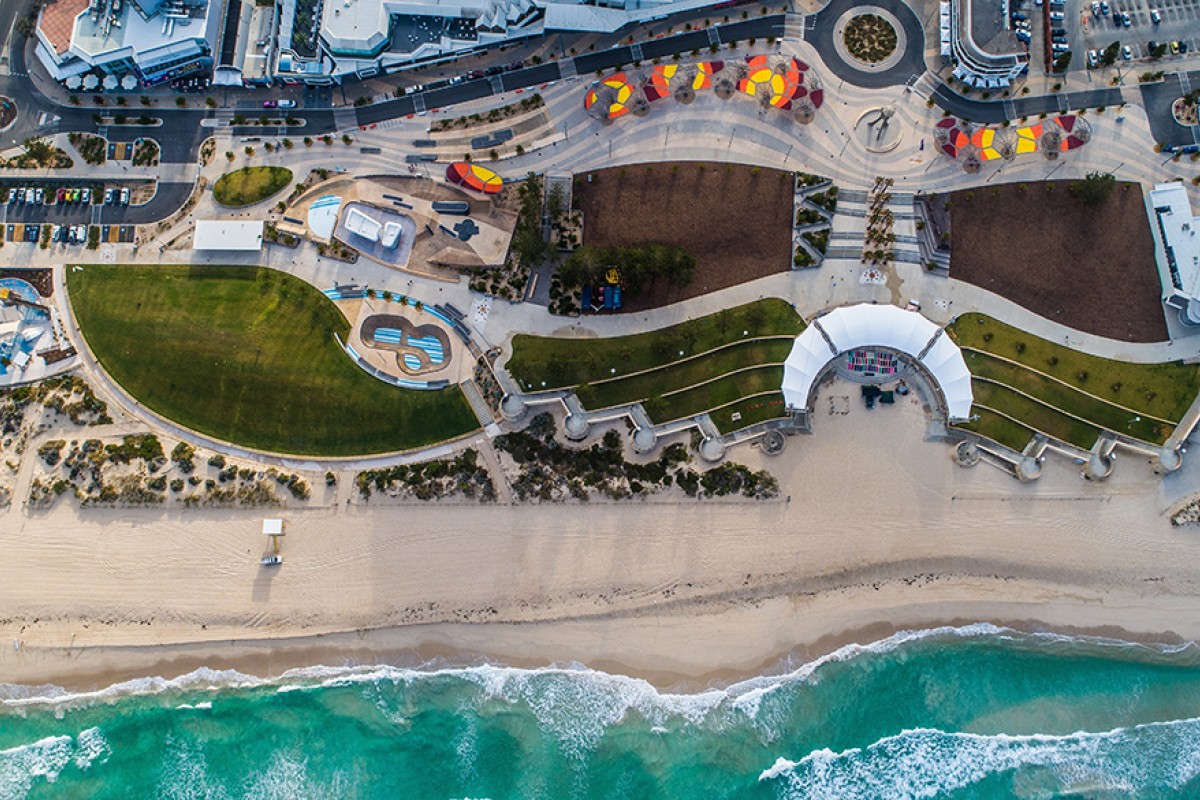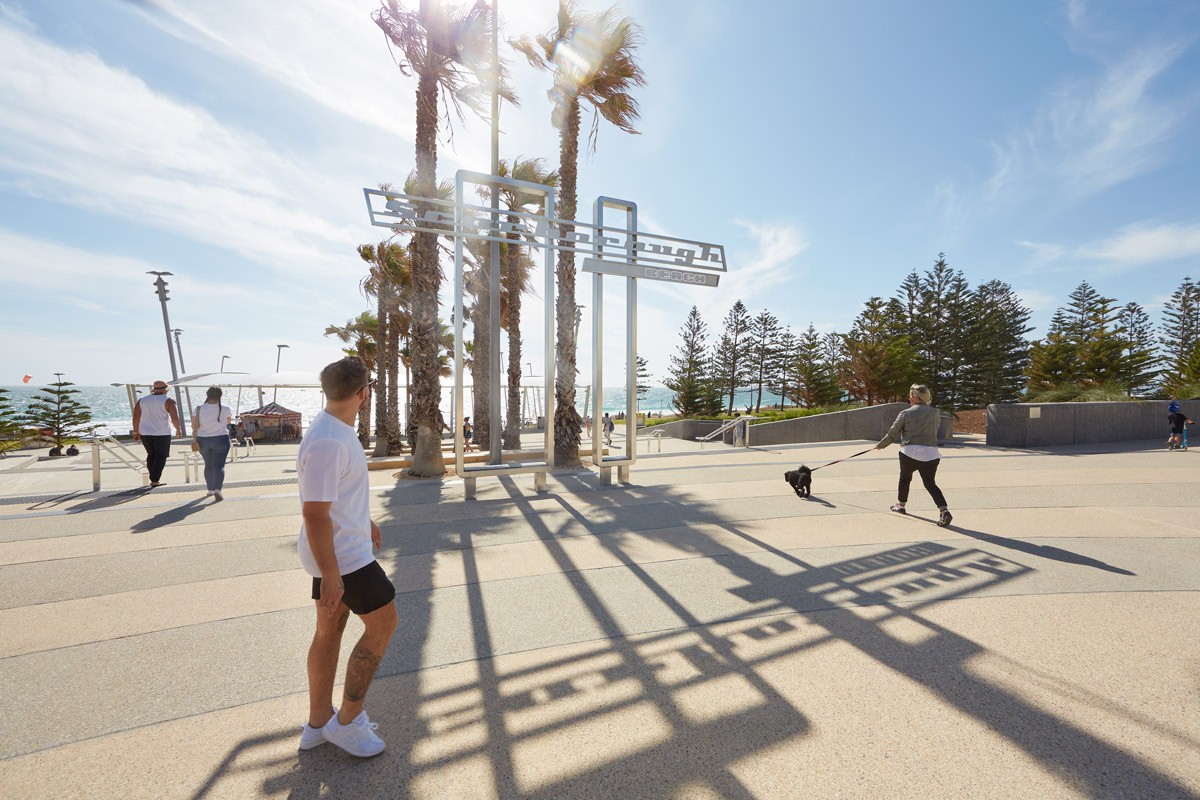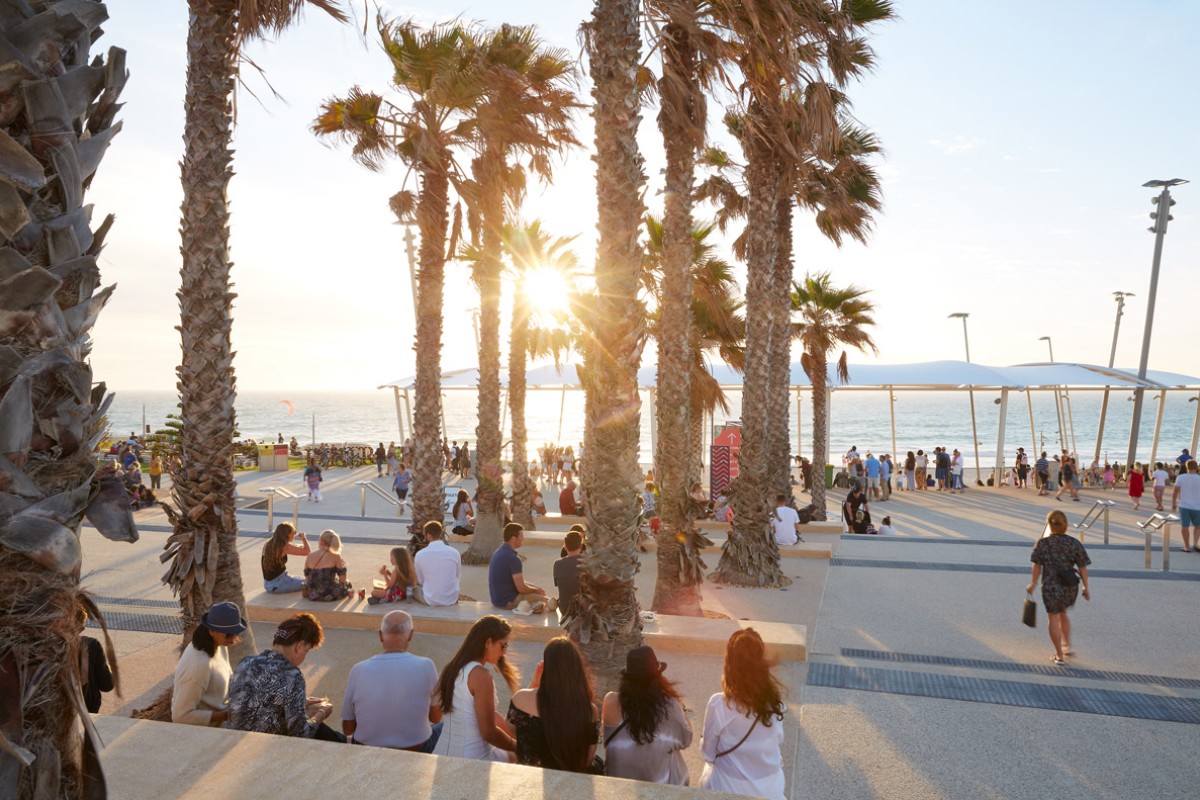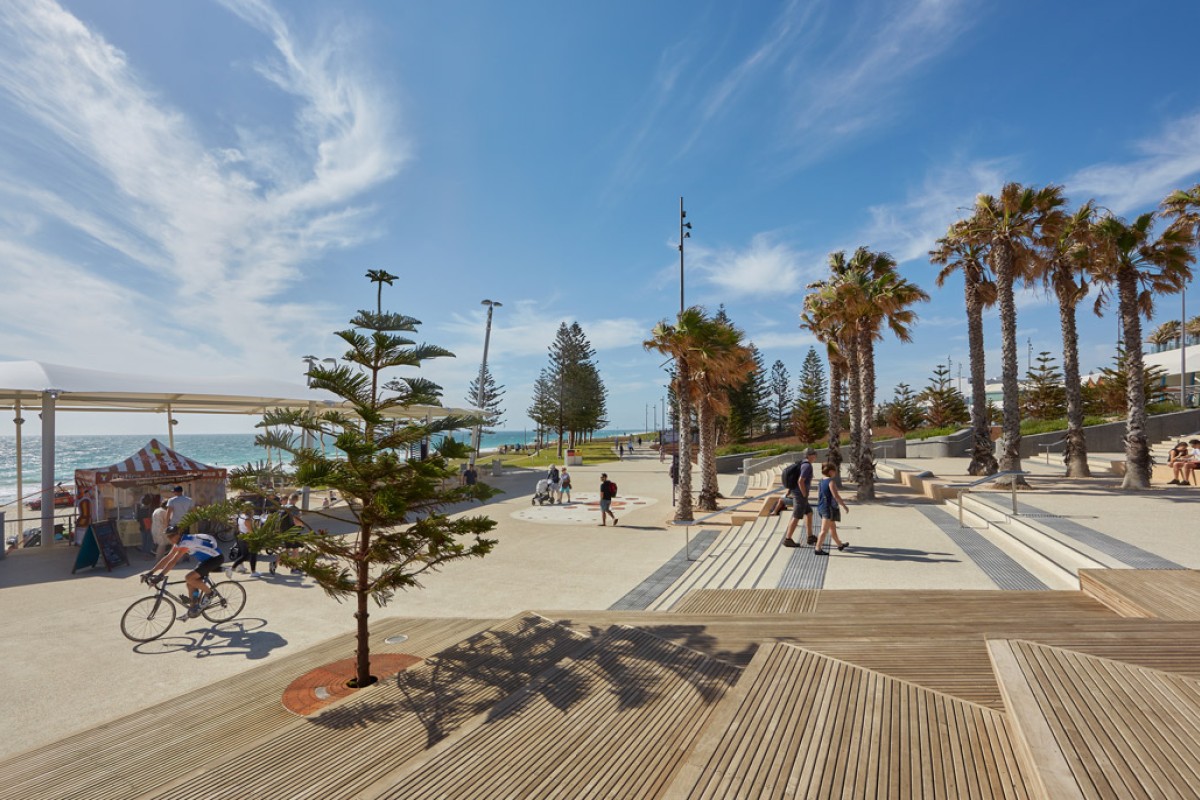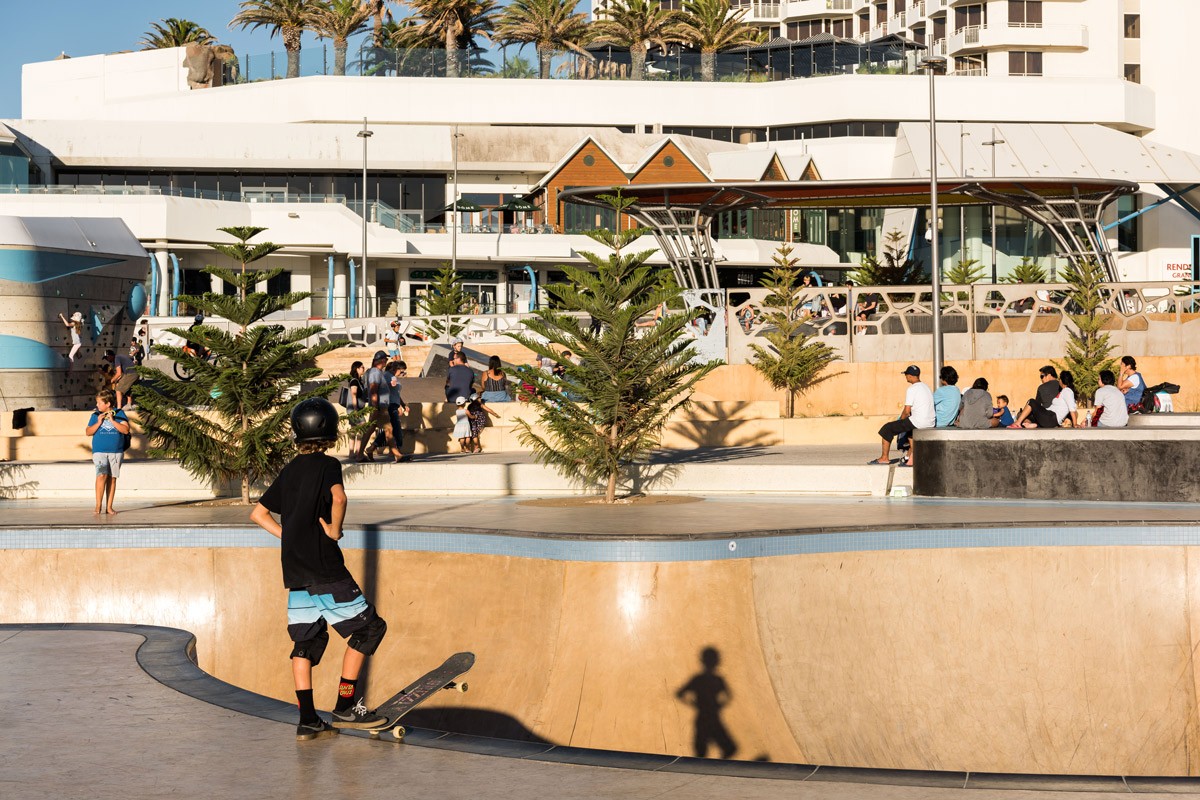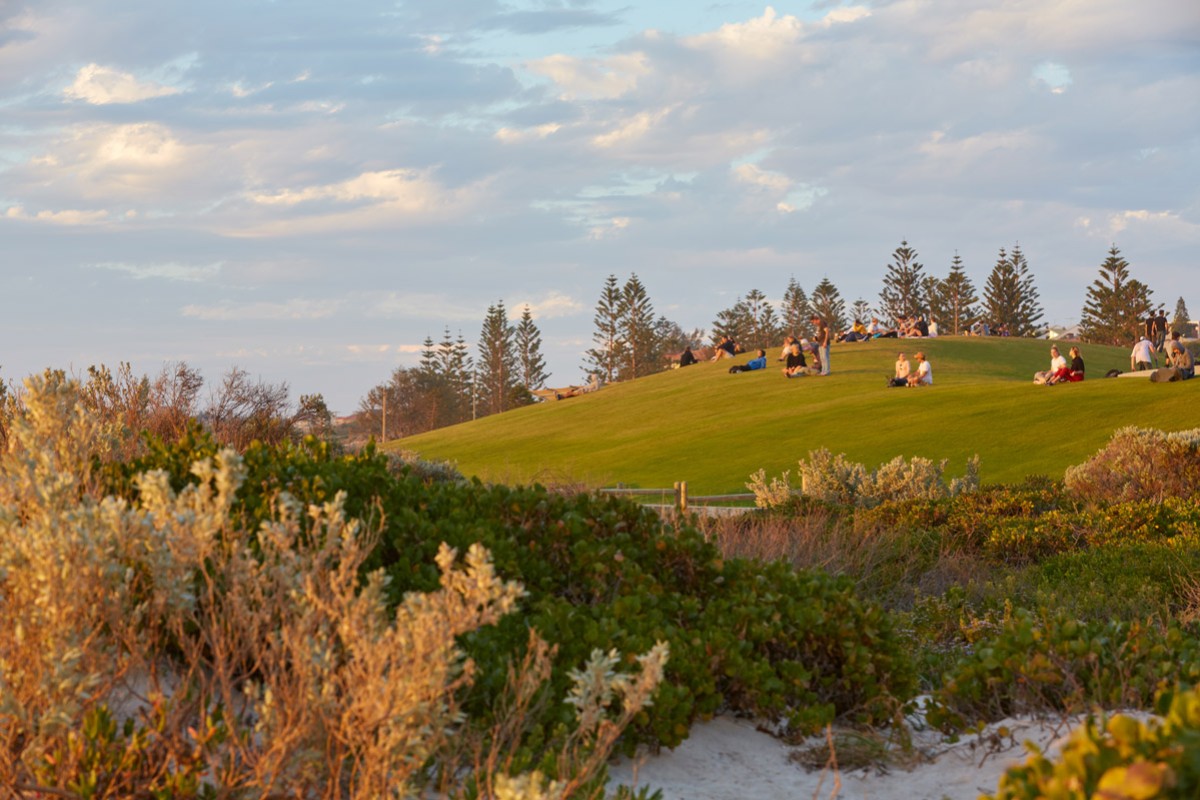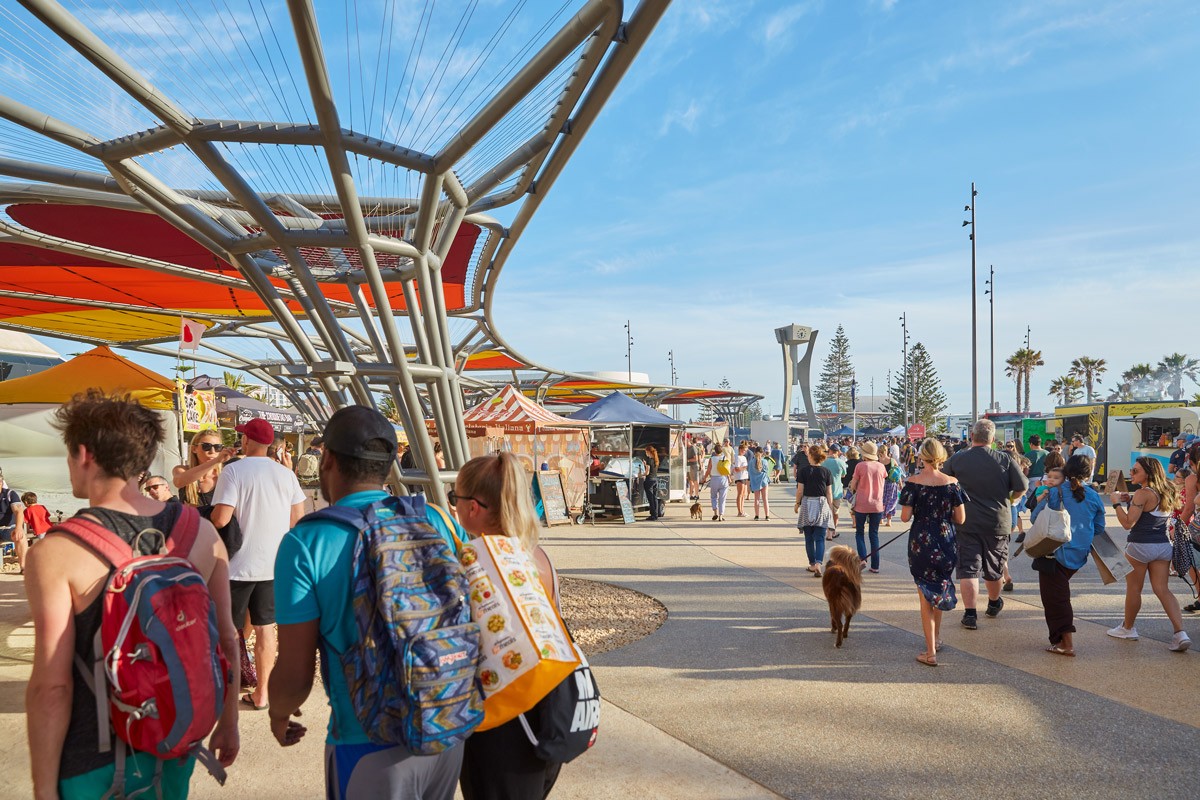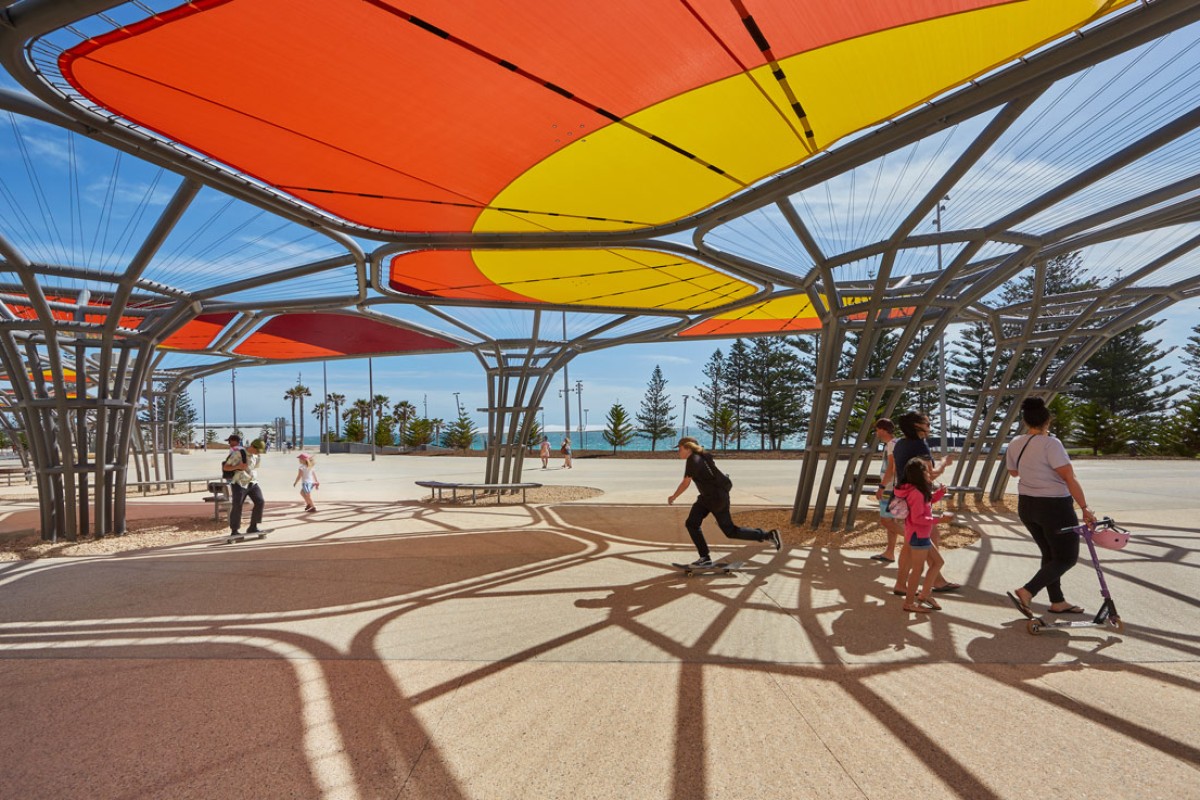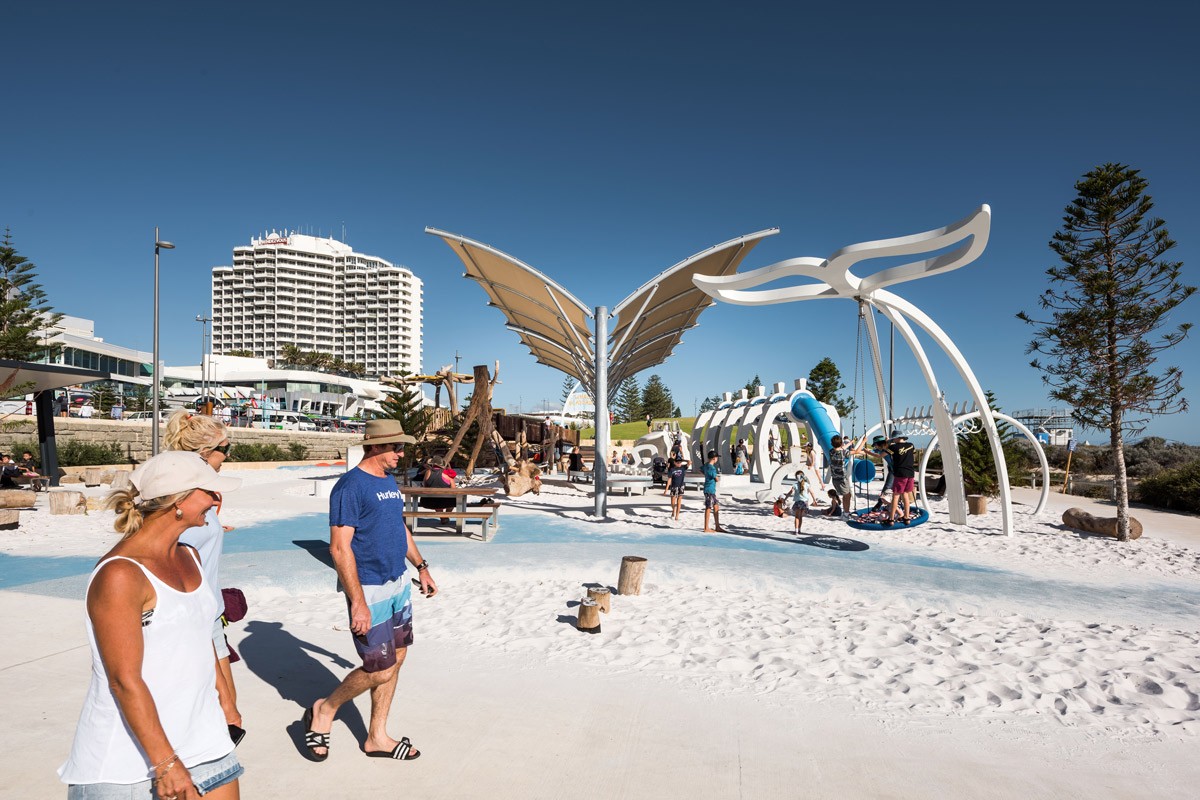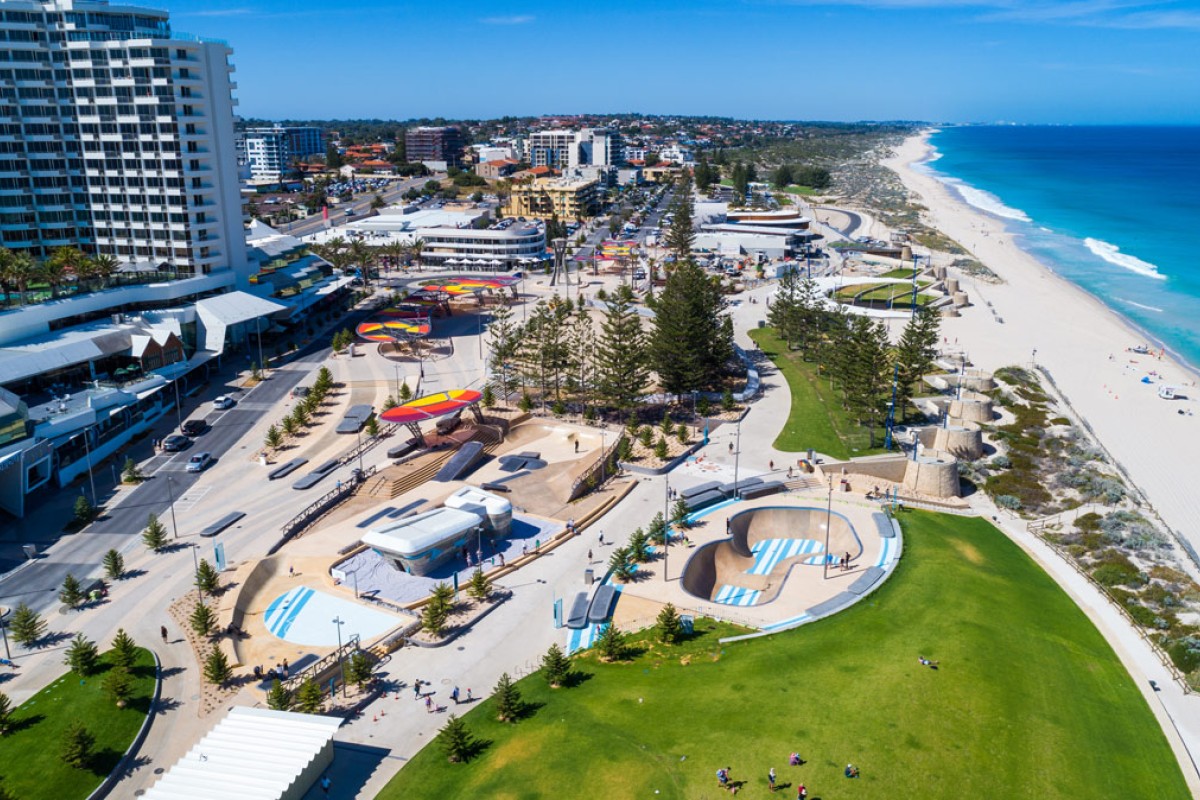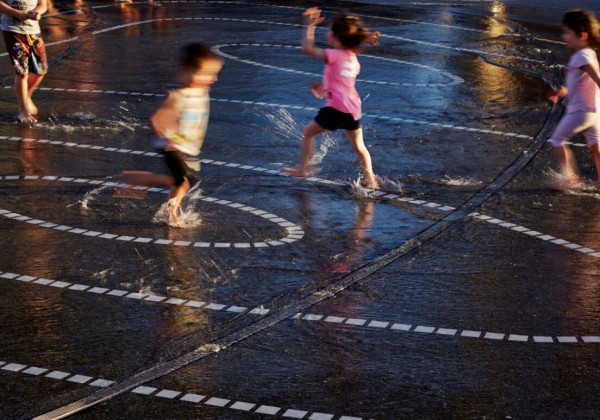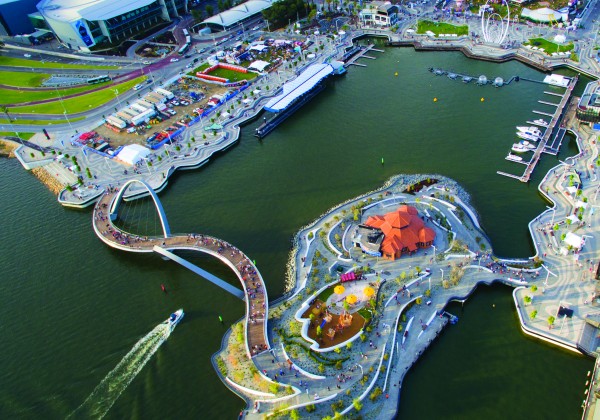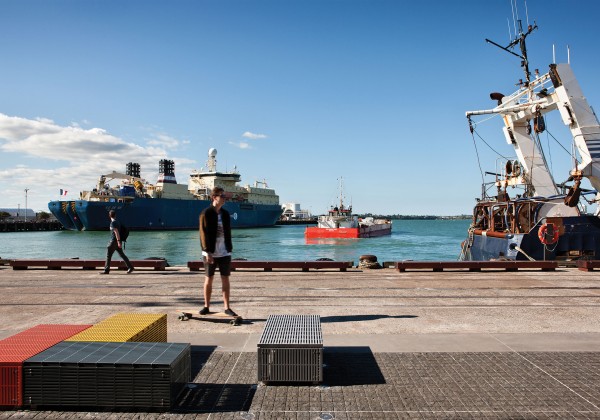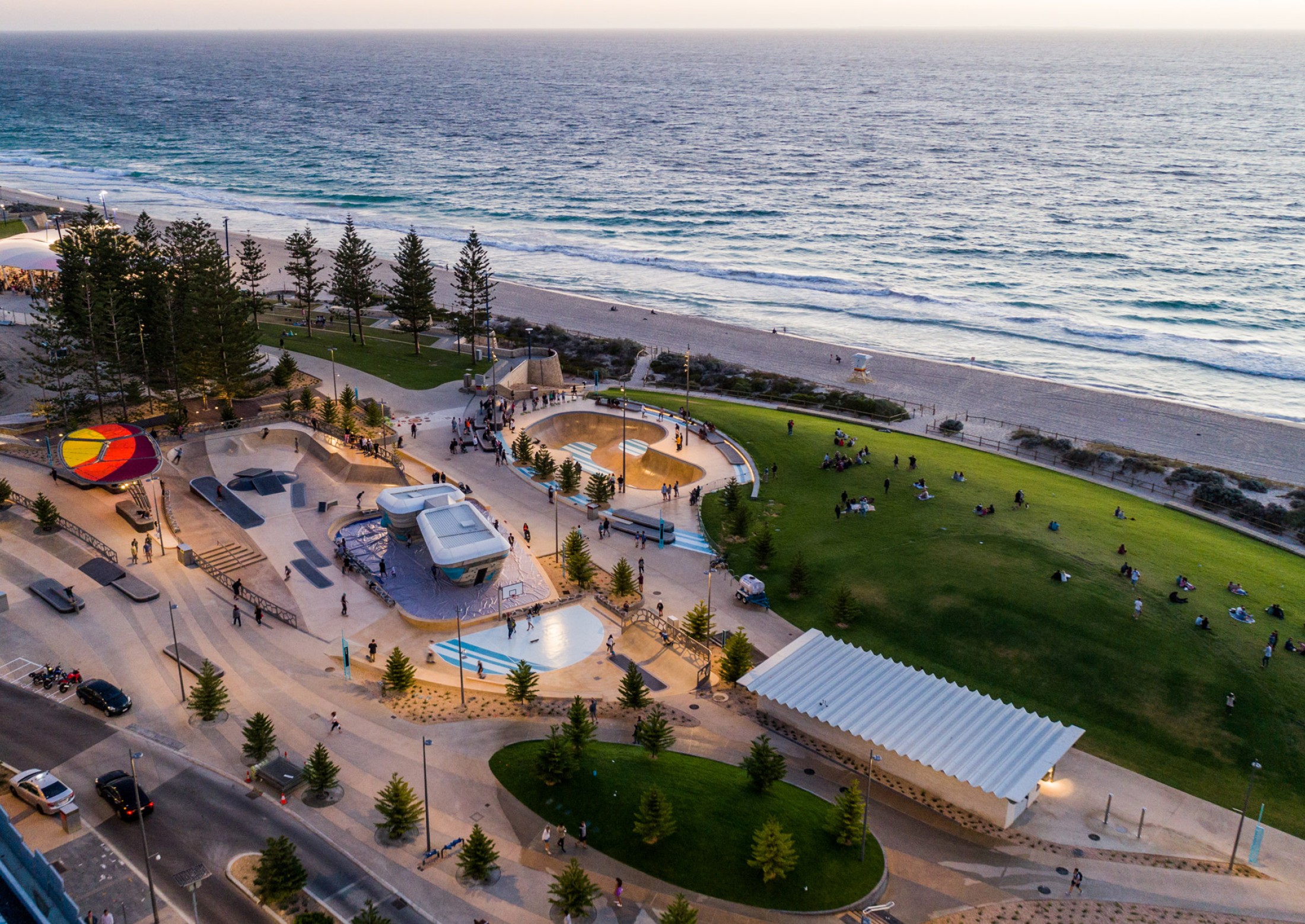
View Presentation
Perth’s Scarborough Beach redevelopment has become one of Australia’s most iconic urban beach experiences, transforming a previously disconnected and carpark-dominated beachfront.
Delivered by the Metropolitan Redevelopment Authority in partnership with the City of Stirling and designed by a TCL and UDLA-led consortium, the project is defined by two main pedestrian promenades that provide clear circulation and frame new amenities and recreational opportunities along the beachfront.
The upper promenade connects to retail and food and beverage outlets, civic plazas and new development zones, while the lower promenade provides opportunities for jogging, cycling and other active uses.
One of the central ambitions underpinning the project was to reduce the impact that road infrastructure has on the beach.
The redesign moves the roundabout at the entrance to the beach back toward the highway, to increase pedestrian and event space and to relocate the heritage clock tower from the roundabout to the pedestrian realm.
Formerly a carpark, Scarborough Square is a new civic space that sits between the beach and The Esplanade. The square is the primary point of arrival to the foreshore and includes a set of iconic shade arbours designed by Perth practice Chaney Architects. The colourful arbours were inspired by the ‘voronoi’ structure found in natural systems and geometries, including dragonfly wings, and the colour pattern was developed in collaboration with Aboriginal Artist Sharyn Egan.
From Scarborough Square a new 22m-central stair connects down to an existing amphitheatre, bordered by new plantings and a terraced deck.
Central to the project is a world-class skate and bouldering space called “The Snake Pit,” designed in collaboration with Enlocus, which includes a 3.6-metre, competition-grade skate bowl for local use, events and global competitions.
In the north of the site a new 11-metre turfed landform has been created called Sunset Hill – it allows spectacular views over the Indian Ocean, particularly at sunset, as well as up and down the beach.
To the north of Sunset Hill a new children’s playground has been designed around a whale skeleton, interpreting Whadjuk/Noongar Dreaming stories of spirits returning to land through the whales.
Two new commercial precincts on the site are yet to be developed.
"The innovative redevelopment plan realigned the foreshore, reshaped core infrastructure, and created new landmark amenities within an inspiring and cohesive public space. This has created a drawcard for people of all ages to interact with one another whilst enjoying one of Perth's most iconic beaches... As a result of the redevelopment, the full social, economic and environmental potential of the foreshore has been unlocked..." — Planning Institute of Australia National Judges' Citation 2019
"Scarborough Beach revitalisation demonstrates maturity, confidence and sophistication while remaining a playful landscape on the edge of a growing city...Celebrating the beach edge, the project consolidates vibrant functionality into an expansive and difficult site, to deliver spaces and activities for a range of visitors and users, whilst maintaining homage to the original quirky character that is Scarborough Beach." — WA AILA Jury Citation 2019
